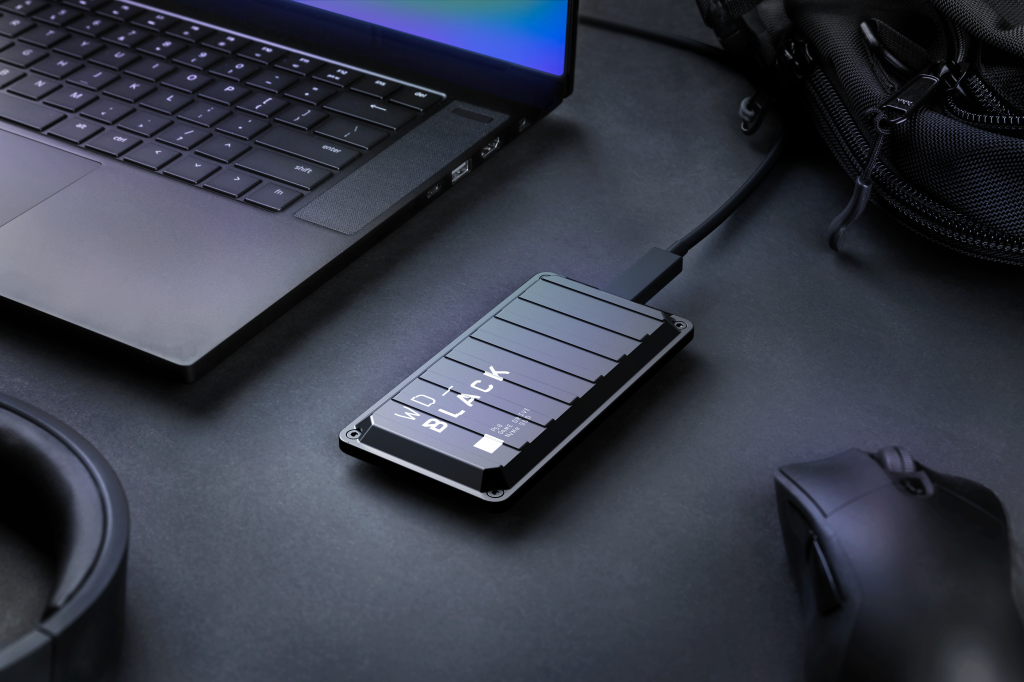If you run out of space on your gaming laptop, or you simply want an easy way to make your game library portable, an external SSD provides a way to expand storage without the hassles involved with installing a drive.
But choosing an external SSD involves a dizzying headache of options, and making a poor choice can leave you wanting. Lucky for you, we’ve done the testing and can offer some solid recommendations that are sure to help, and not hinder, your gaming setup.
Updated 07/10/2023: We’ve added the SanDisk Pro-G40 as our choice for best USB/Thunderbolt combo. It’s a dual-bus Thunderbolt drive that gives you absolutely absurd 40Gbps performance. Read more about our latest external drive pick in the summary below.
WD Black P50 Game Drive SSD (1TB) – Best overall external SSD for gaming

Pros
- Up to 2GBps with SuperSpeed USB 20Gbps
- Distinctively militaristic styling
Cons
- Pricey compared to SuperSpeed 10Gbps drives
- Requires the extremely rare SuperSpeed USB 20Gbps port for full performance
No, we didn’t make this choice simply because the drive is named “Game Drive SSD.” This WD drive hits the performance criteria you want and it features lust-worthy USB 3.2 SuperSpeed 20Gbps support. Although USB 3.2 SuperSpeed 20Gbps has been rare, many newer motherboards support it today. If your PC doesn’t support it, the good news is that it will support the far more common USB 3.2 SuperSpeed 10Gbps, the next-best thing. That still gives you good performance now, and future-proofs you for your next mobo upgrade. Unlike a typical portable SSD that may have a plastic or rubber shell to absorb hits, the WD Black P50 is metal, which should help wick and radiate the heat from the smokin’ SSD inside. If ultimate performance is what you’re after, WD’s P50 Game Drive is worth every penny of its premium price.
Read our full
WD Black P50 Game Drive SSD (1TB) review
Seagate FireCuda Gaming SSD (1TB) – Best premium external SSD for gaming
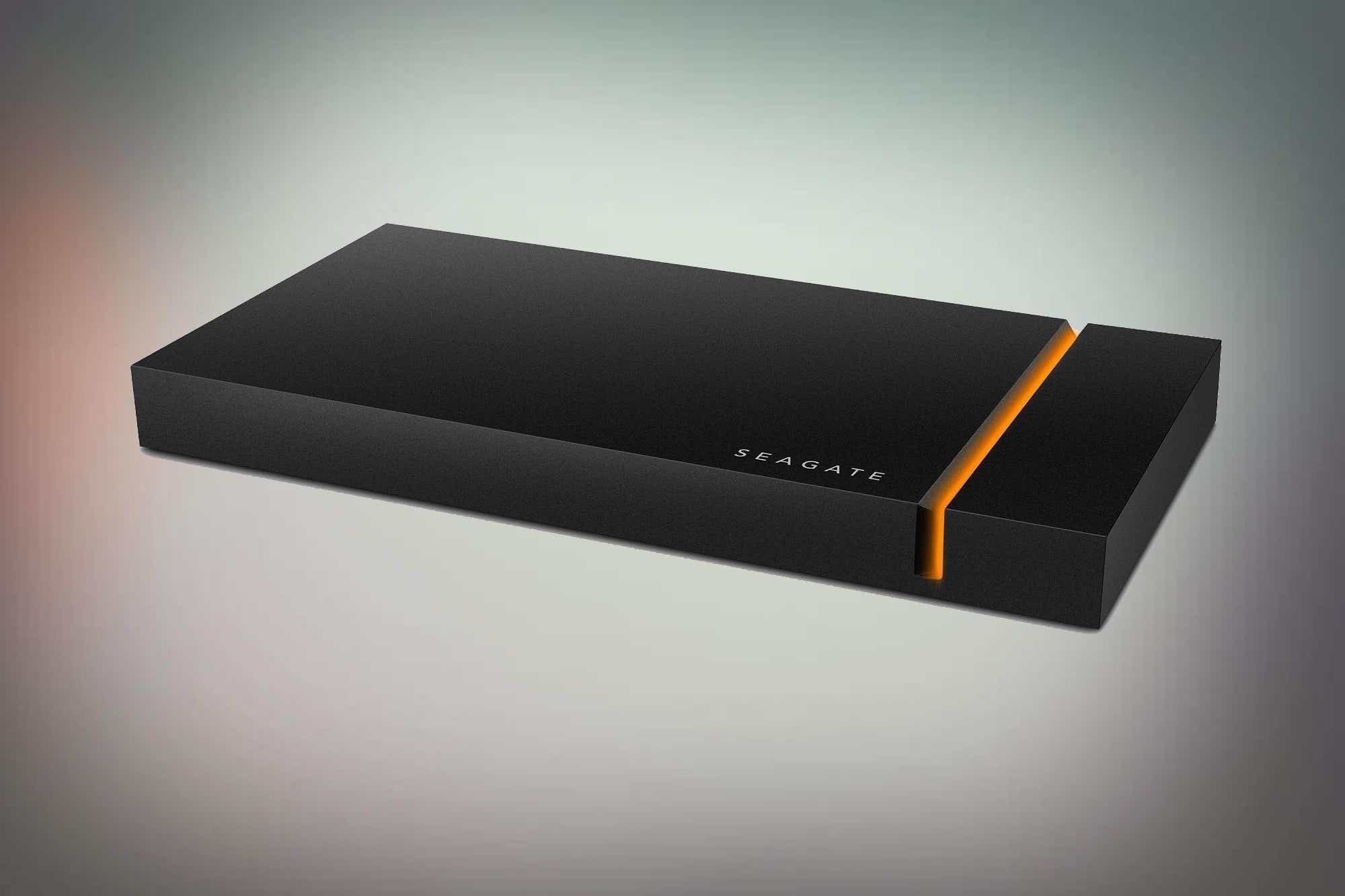
Pros
- Drop-dead gorgeous
- 2GBps transfers via SuperSpeed USB 20Gbps
Cons
- Pricey
- Superspeed USB 20Gbps ports are few and far between
Seagate’s FireCuda Gaming SSD is a worthy alternative, but it has a much steeper price tag for similar performance to the WD Black P50. However, the FireCuda has an absolutely stunning external SSD and is worthy of a place on any desktop. It’s not just a pretty façade though—it’s compatible with a SuperSpeed USB 20Gbps port, meaning it can attain transfer rates of up to 2GBps. It is certainly the coolest-looking external SSD on this list, and if it weren’t for the premium price, it would probably be our top pick.
Read our full
Seagate FireCuda Gaming SSD (1TB) review
Crucial X6 Portable SSD (2TB) – Best budget external SSD for gaming
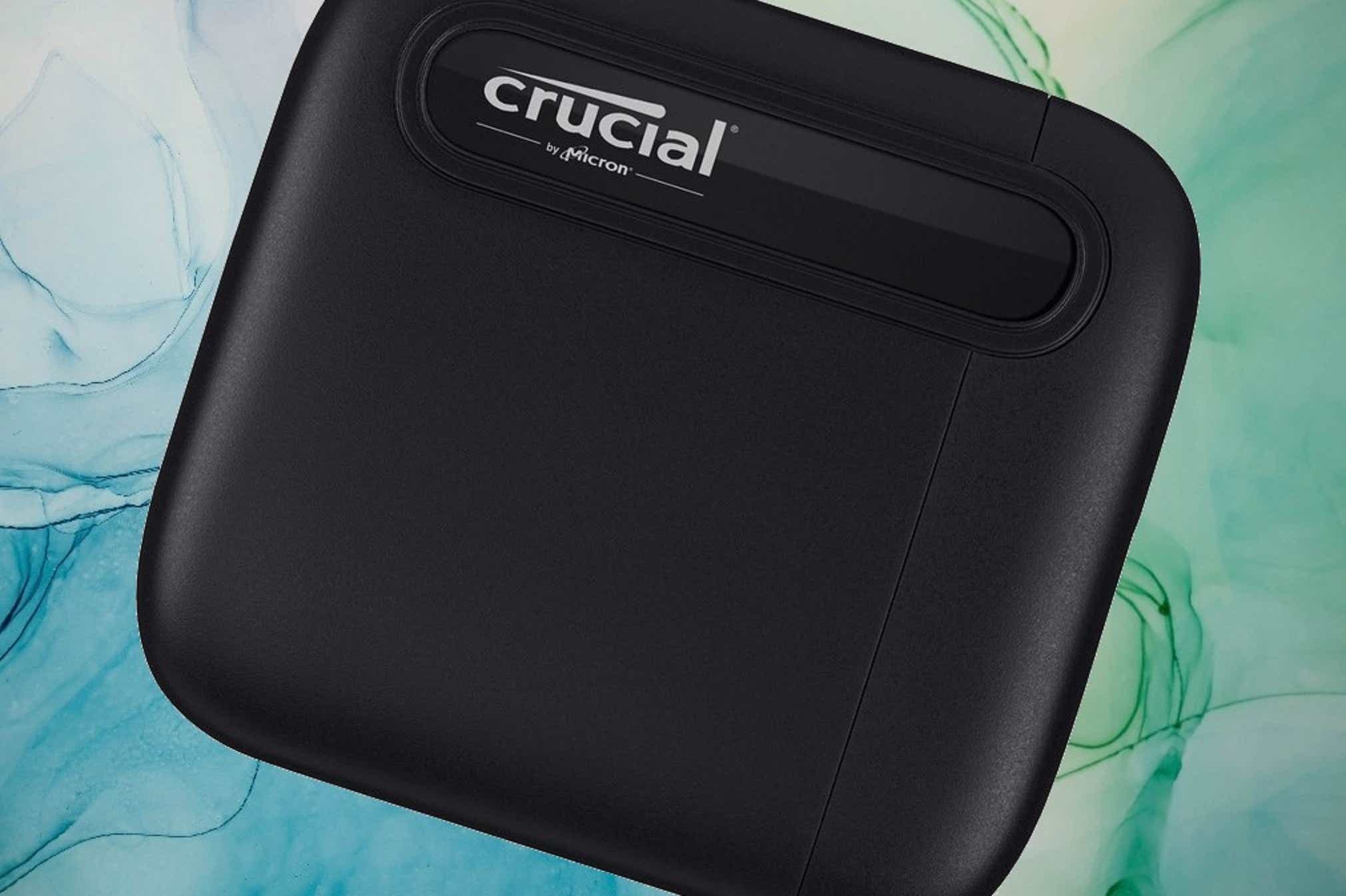
Pros
- Ergonomic design
- Good everyday performance
- Very affordable for an external SSD
Cons
- Performance tanks when cache runs out
Price When Reviewed:
$229.95
The Crucial X6 Portable SSD is a uniquely square-shaped SSD that can easily be placed in your hip pocket. In a sea of portable SSDs whose shape makes them a literal pain when pocketed, the thin, rounded-edge X6 is a sigh of relief. It’s not only small and easy to carry around, but it also packs some decent performance, and you won’t find many cheaper. While it’s not state-of-the-art fast, it’s fast enough for most users and the affordable price makes it a great value SSD.
Read our full
Crucial X6 Portable SSD (2TB) review
Adata Elite SE880 SSD – Most portable external SSD for gaming
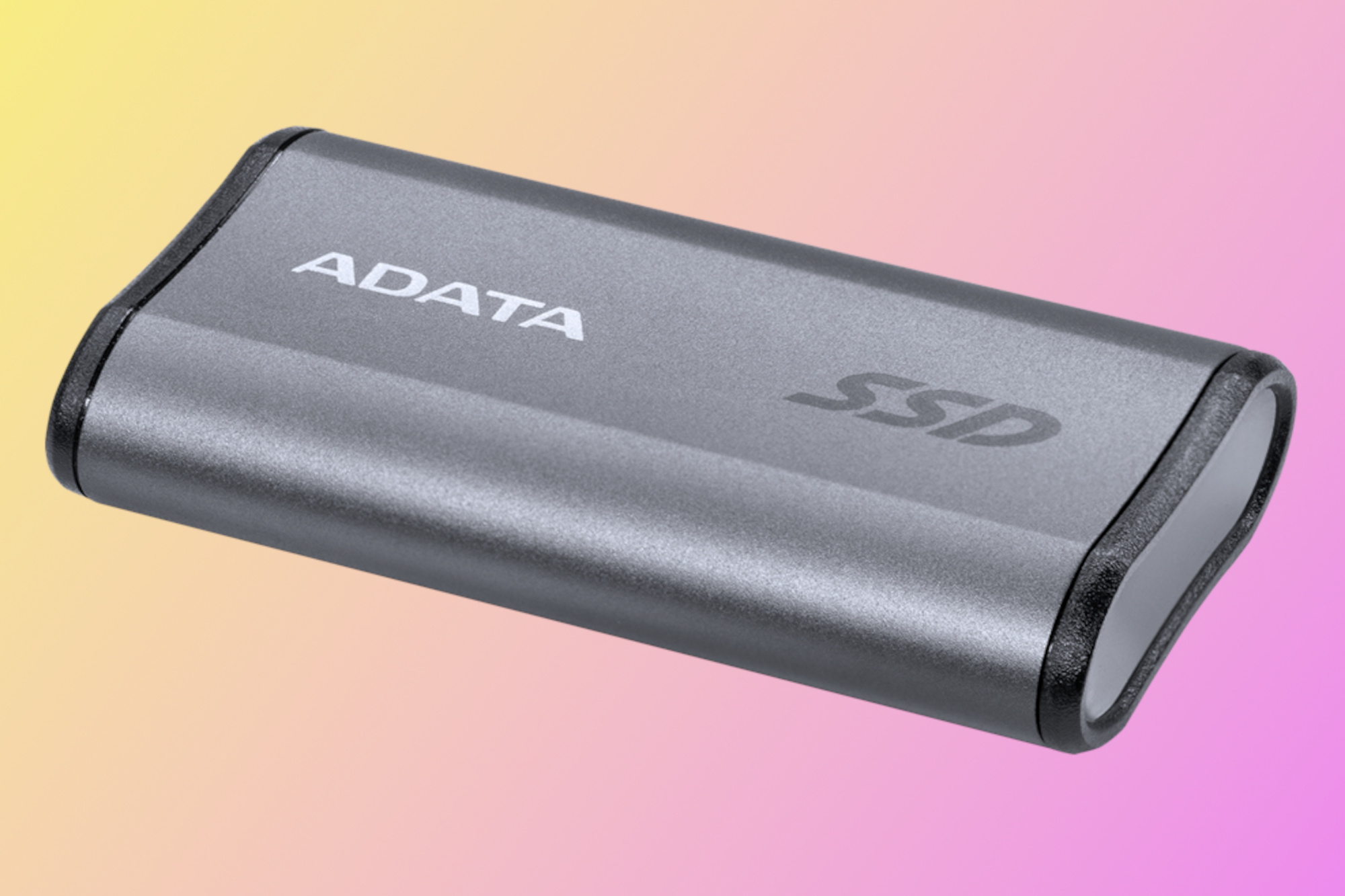
Pros
- Very fast, over-20Gbps USB connection
- Extremely small form factor
- 5-year warranty
Cons
- Slows considerably during long contiguous writes
- Somewhat low TBW rating
Price When Reviewed:
$79.99 for 500GB I $129.99 for 1TB
The Crucial X6 might be small, but it still can’t match the Adata’s Elite SE880 for portability. Measuring in at only 2.55 inches long, 1.38 inches wide, and 0.48 inches thick, it resembles a USB thumb drive more than a standard external SSD. It also weighs a featherlight 1.1 ounces—making it easy to forget it’s even in your pocket.
In terms of performance, the Elite SE880 is quick to handle everyday tasks but slows down during long writes. In a real-world 48GB transfer test, the drive came through with flying colors, but it lost a lot of ground in the longer contiguous write tests. This means that photo and video pros with large files to transfer might want to consider other options.
Read our full
Adata Elite SE880 SSD review
Samsung T7 Shield (4TB) – Best high-capacity option
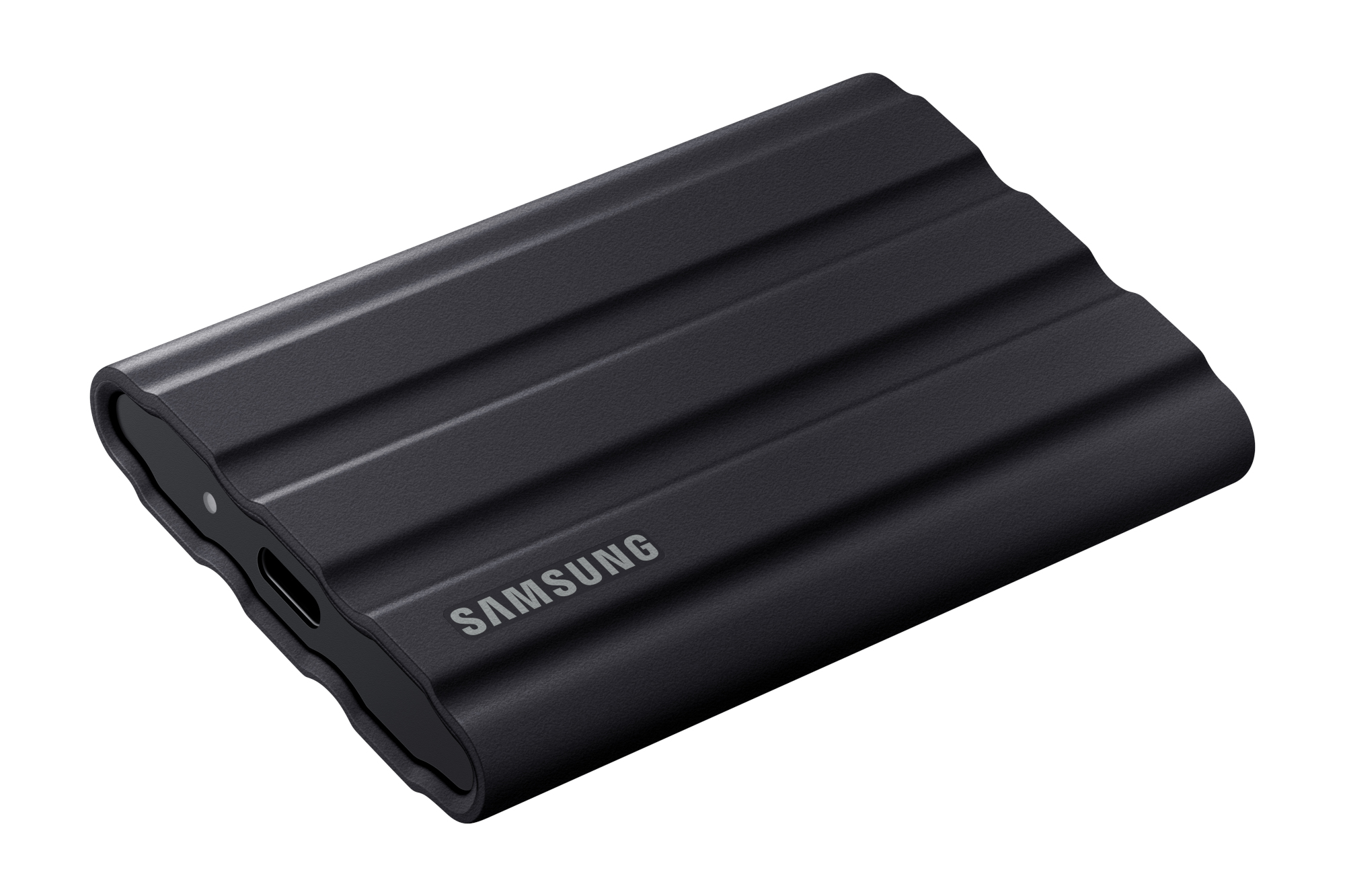
Pros
- Fast 1GBps sustained transfers
- Excellent real world performance
- Vast 4TB capacity
- Svelte and handsome
Cons
- Not cheap
- Small 4K performance glitch under CrystalDiskMark 8 writing 4K files
Price When Reviewed:
$469
If you need serious storage and you’re willing to pay for it, then the Samsung T7 Shield is the way to go. The latest version has been upgraded to a 4TB option allowing you to store all of your favorite games—as well as everything else—conveniently on one SSD. It’s also quite portable, fitting easily into your pocket, and comes with decently fast USB 3.2 10Gbps. In our speed tests, we saw the drive handling impressive 1Gbps sustained transfer speeds and proving to be the fastest 10Gbps SSD we’ve ever tested.
It also comes in a secure silicone protectives sleeve and has an IP65 rating in case you want to go adventuring with the drive, in addition to gaming. The T7 Shield has always been one of our favorite drives and the upgrade to a 4TB capacity just makes it that much better.
Read our full
Samsung T7 4TB review
SanDisk Pro-G40 – Best USB/Thunderbolt combo
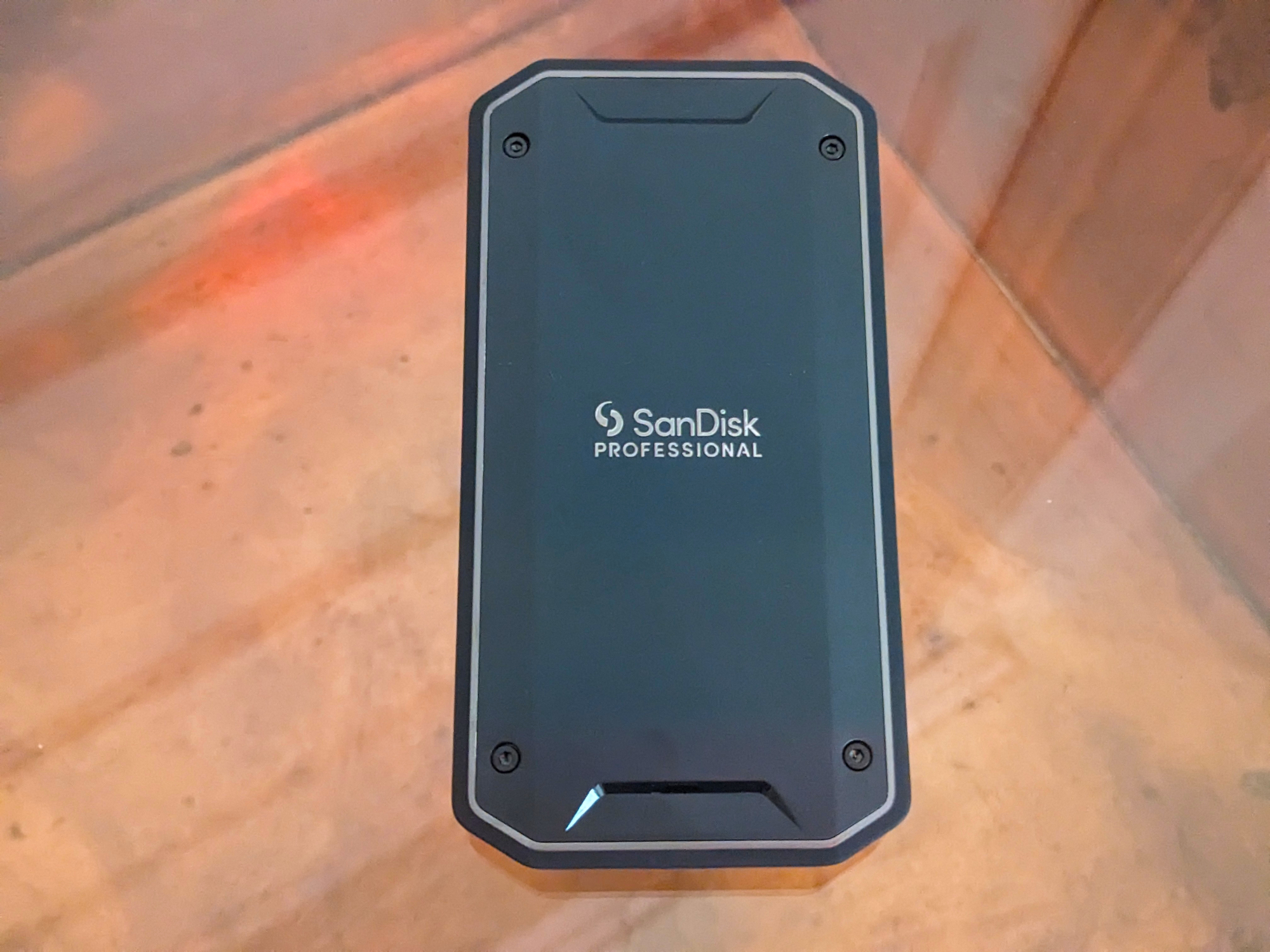
Pros
- Both 10Gbps and Thunderbolt 3/4 connectivity
- Fast, especially over Thunderbolt
- IP68 weather and dust resistant
Price When Reviewed:
1TB/$160 I 2TB/$240 I 4TB/$400
The SanDisk Pro-G40 not only gives you superfast 40Gbps performance but it also allows you the flexibility to switch to a slower, less power-hungry USB connection, as well. It’s easily the best dual-bus compatibility drive that we’ve ever tested. The G40 provides the freedom of choice between optimizing speed via Thunderbolt 3/4 at up to 40Gbps or opting for the power-saving 10Gbps via USB. In our 48GB and 450GB transfer tests, the drive absolutely blew away the competition when connected with Thunderbolt.
If you decide to take the Pro-G40 on the road for some tougher outings you can rest assured it’ll be just fine given its IP68 rating for weather and dust resistance. Thunderbolt drives are never really cheap and SanDisk’s Pro-G40 is no exception. But it’s absolutely worth it if you value performance above cost or just need the versatility of a dual-bus SSD.
Read our full
SanDisk Pro-G40 SSD review
How we test external SSD game performance
The biggest question you want to know is, how much does using an external drive hurt game performance. To give us an idea of how much it matters, we used UL’s new 3DMark Storage Benchmark. To create the benchmark, UL essentially records the drive access patterns during several common gaming tasks to make “traces.” These drive-access traces are then run on the tested storage device multiple times to duplicate the patterns without having to actually load the game.
For its test, 3DMark reproduces what happens loading to the start menus of Battlefield V, Call of Duty: Black Ops 4, and Overwatch. 3DMark Storage also tests using OBS, or Open Broadcast System, to record Overwatch being played at 1080p resolution at 60fps, installing The Outer Worlds from the Epic launcher, and saving a game in The Outer Worlds. For the final test, 3DMark Storage tests copying the Steam folder for Counter-Strike: Global Offensive from an external SSD to the target drive.
We used a 12th-gen Intel Core i9-12900K running Windows 11 on an Asus ROG Maximus Z690 Hero motherboard. The board features native Thunderbolt 4 and USB 3.2 10Gbps ports. We added a Silverstone ECU06 for USB 3.2 SuperSpeed 20Gbps support. We then used a Vantec M.2 NVMe SSD to USB 3.2 Gen2x2 20G Type C enclosure with a Western Digital SN700 NVMe SSD to test USB 3.2 20Gbps and 10Gbps performance. We also installed the same SN700 into a PCIe 3.0 riser card to test its native performance. This gives you an idea of how much you lose going from being installed inside the laptop or PC compared to using a USB port. For added contrast, we also ran 3DMark Storage on an older Plextor PX-512M7VG SATA SSD inside of a Silverstone MS09 SATA enclosure that was plugged into a USB 3.2 10Gbps port. And because you want to know how slow a hard drive would be, we also ran the same test on a Western Digital 14TB EasyStore hard drive plugged into a USB 3.2 10Gbps port. The EasyStore is actually limited to USB 3.2 SuperSpeed 5Gbps.
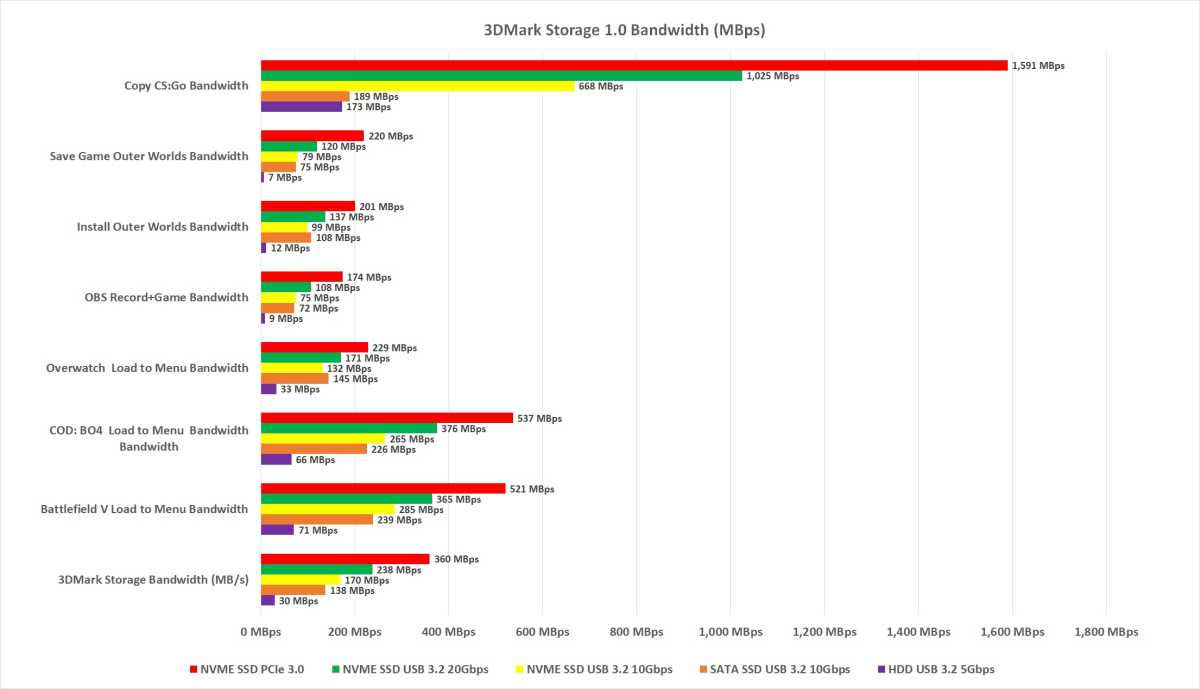
IDG
What should you make of the above results? Well, clearly if you can install an SSD inside of your PC, you’ll get the most performance out of it. But you should consider some of the context. If you’re only looking at the big long red bar at the top of the chart, consider that the particular test is measuring what would happen if you copied a large folder of files to the SSD. For most people, that’s only done once in a while.
The more common scenario is waiting for a game to launch. Running an internal NVMe drive will still be faster, but the gap closes a little. Between the three popular USB interfaces: USB 20Gbps, USB 10Gbps, and SATA on USB 10Gbps, the fastest is USB 3.2 20Gbps. With a USB 3.2 20Gbps SSD, you might see Battlefield V shave 25 percent of the load time versus a USB 3.2 10Gbps drive. Of course, performance is also game dependent. For instance, both Call of Duty and Battlefield see 45 percent or so greater bandwidth on the internal SSD, but with the less graphically intense Overwatch, it’s closer to 30 percent.
The other surprise is the performance of the SATA SSD versus the NVMe SSD when the NVMe SSD is in a USB 3.2 10Gbps port. In game loads, saves, and install scenarios, they’re fairly close. The NVMe external SSD does open up to huge lead over the slower SATA once you move to a task where you’re copying a huge amount of files—such as the CS:GO results. But again, how often do you do that?
Of course we can’t leave this without pointing out just horrible hard drives are. Would it be more improved with a faster hard drive? Unlikely. The very minimum you should use if storing games on an external drive is a SATA SSD, so don’t run a game from your external hard drive unless you like to wait for everything.




